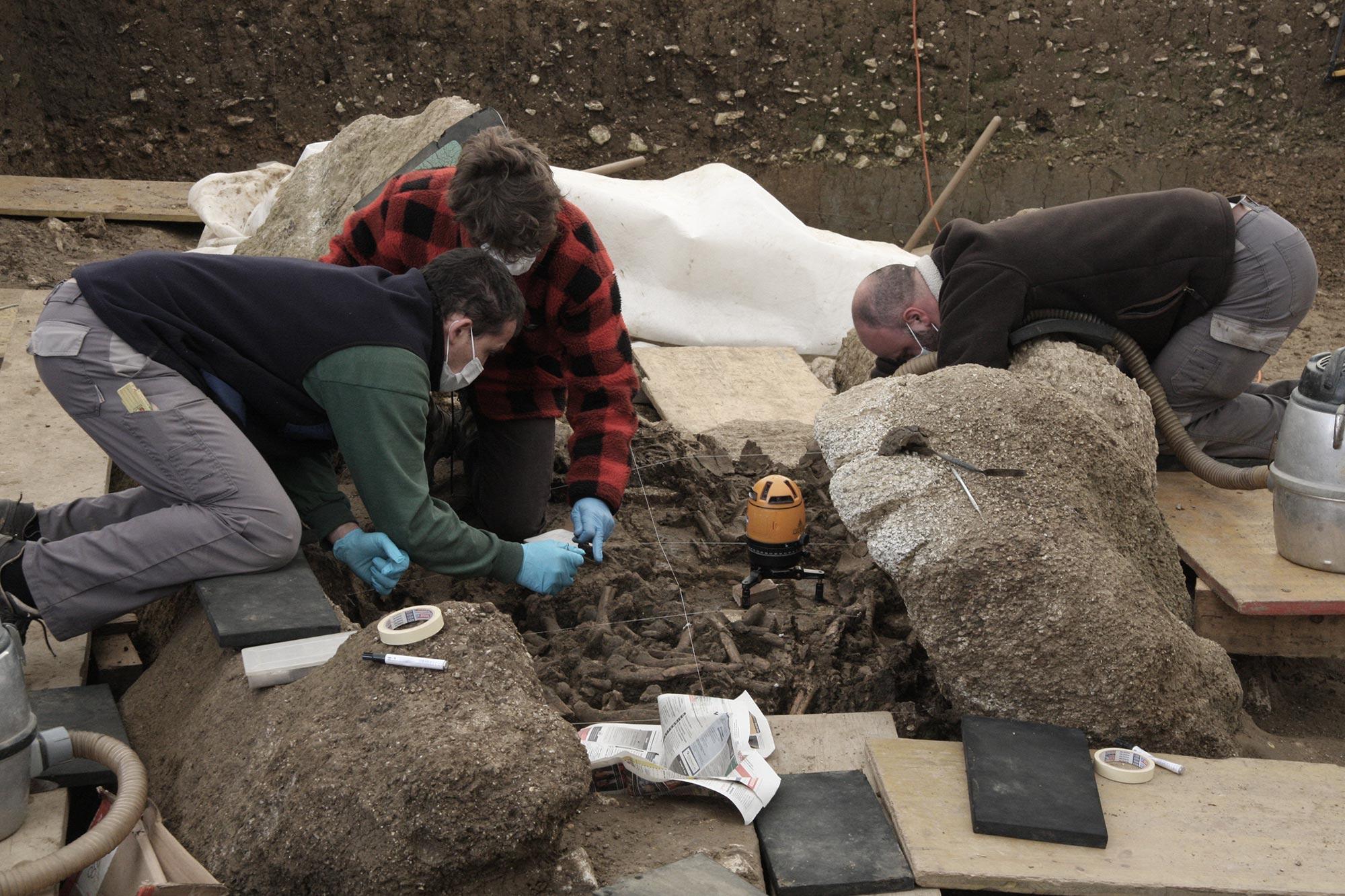Gravestones show that Neolithic people were skilled builders

People 5000 years ago were already skilled builders and probably lived in the same place for generations – an old burial site reveals Stone Age secrets.
A Neolithic grave discovered in 2012 near Oberbipp has turned out to be a real treasure trove for science. After ten years, a multidisciplinary research team co-funded by the Swiss National Science Foundation has published the last study on this subject for the time being. Together with earlier investigations, new findings on the construction and history of the dolmen (a tomb built of stone blocks) provide a surprisingly clear picture of the people who lived at the southern foot of the Jura 5000 years ago.
Great technical prowess
"In the last ten years, scientific methods have made a leap forward, especially in the field of anthropology, and this has enabled us to learn much more than we ever dreamed of," says archaeologist Marianne Ramstein of the Canton of Bern’s archaeology department. She focused mainly on the construction of this exceptionally well preserved dolmen. For example, she established that the stones for the burial chamber all came from within a radius of about one kilometre. "A lot of effort was put into building this site," Ramstein says. "Different types of stone were selected deliberately and carefully put together, showing a high degree of technical understanding." As an example, she cites the choice of a slab of tufa limestone for the entrance – a stone that is easy to shape and fit.
Together with the Institute for Integrative Prehistory and Archaeological Science at the University of Basel, Ramstein also determined what happened to the dolmen in subsequent eras. At the time of the Roman Empire and in the early Middle Ages, the tomb was probably still visible and visited by people – as evidenced by contemporary pottery shards, for example. Then, from the Middle Ages, the land was regularly flooded to make it fertile. The sediment washed in gradually covered the grave until, in modern times, only the top peeked out. "Local farming techniques prevented earlier discovery and are one of the reasons why the site is so well preserved," Ramstein says. Fine sediment also sealed the gaps between the stones, preserving the skeletons of 42 people buried there.
Men from three generations
The anthropological study of these remains by a research group led by Sandra Lösch from the University of Bern and a team from the Max Planck Institute for the Science of Human History in Jena has provided a wealth of information over the years. Among other things, the researchers studied the bones, determined the chemical composition of the teeth and used DNA analysis to establish how the people buried here were related. "The results show, for example, that people had already been living near the dolmen for a long time, because male relatives from at least three generations were buried in it," Lösch says. The women buried there may have come from other regions. In addition, it could be concluded from the investigations that the diet of the buried people was based mainly on arable crops plus a small amount of animal husbandry.
"There are many well-researched remnants of Neolithic settlements around the Swiss lakes. But virtually nothing was known about the people who lived in the hinterland at the time," Ramstein says. Because of the environmental conditions prevailing there, neither buildings nor pottery nor skeletons have been preserved in most cases. "The Oberbipp find helps us to close this research gap." Thanks also to the people who lived there 5000 years ago and who put so much care and devotion into building a tomb to bury their dead.